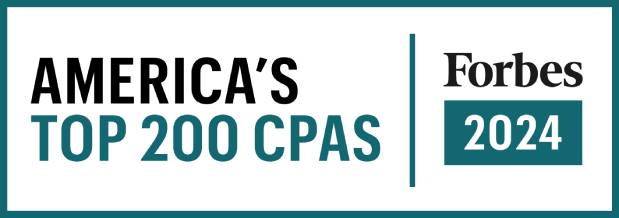Many people assume that the Earned Income Tax Credit (EITC) only applies to traditional employees with W-2 wages, but that’s not true. In today’s post, I’ll explain how small business owners, freelancers, and the self-employed can qualify for this credit. I’ll also share a tax strategy that can help small business owners maximize their EITC amount.
What is the Earned Income Tax Credit?
The EITC is a refundable tax credit that was put in place to help low-income to moderate-income workers. Unlike a deduction, which reduces your taxable income, tax credits like this one reduce your actual tax bill.
And because the EITC is a refundable tax credit, you can get money back for the credit even if your tax bill is $0. For example, if you qualify for a $2,000 EITC and your tax bill is only $500, you would get a $1,500 tax refund.
Who can claim the Earned Income Tax Credit?
To qualify for the EITC, you must meet several requirements. The main requirements are:
- Earned Income: As the name says, you must have earned income during the tax year. This could include wages, salaries, tips, and self-employment income.
- Adjusted Gross Income (AGI): Your AGI must be below a certain limit, which changes yearly and is also impacted by your filing status and the number of qualifying children you have. For instance, for tax year 2025, the maximum AGI that qualifies for EITC is $57,310 for single, head of household, or widowed filers and $64,430 for those who are married filing jointly.
- Social Security number (SSN): You must have a valid SSN.
- Filing Status: All filing statuses are typically eligible, but if you file as married filing separately, there are other special requirements you’ll need to meet.
- U.S. Resident: You must have been a U.S. resident for more than half of the tax year.
Can small business owners or entrepreneurs claim the Earned Income Tax Credit?
Yes, small business owners can claim the EITC! Here’s the thing to remember: If your business made money, your net profit is considered earned income.
The other thing to remember is that the EITC amount you may qualify for increases with earned income up to a certain point, but then plateaus and begins to phase out at higher earned income amounts.
Let me give you a couple of examples to show you how this works with actual numbers:
- Example 1: Bridgette runs a photography business. In 2024, her earned income was $45,000. She has two children who live with her full time, she is a single filer, and she meets all other EITC requirements. Because her AGI was under the threshold, Bridgette qualified for an EITC of $2,869.
- Example 2: Lauren has a new business selling goat milk soap. Her gross sales were excellent for her first year as she brought in $40,000. However, after expenses, her earned income was only $2,500. Like Bridgette, Lauren is a single filer with two children who meets all EITC requirements, but she only qualified for an EITC of $1,000.
Some other things to keep in mind that could keep you from receiving the EITC are:
- If your business had a loss for the year, that loss can reduce or even completely eliminate your EITC eligibility.
- If the IRS classifies your business as a hobby, any money that you bring in from that hobby can’t count towards your earned income.
What strategies can small business owners use to maximize their Earned Income Tax Credit?
Small business owners are in a unique position to maximize the EITC amount they receive because they often have more control over when they recognize income. First, remember that your earned income is your net business profit after expenses, so influencing when you pay expenses can help you get your earned income number in that “sweet spot” needed to maximize your credit amount.
For instance, if your income is too low, you can consider deferring some expenses by doing things like waiting until January to buy supplies instead of at the end of the year. Or, if your income is too high, you can prepay deductible expenses like insurance or office supplies before the end of the year so that you can reduce your profit and stay under the phaseout threshold.
You should also pay your self-employment taxes. Not paying could make you ineligible for the EITC. Some business owners try to avoid reporting income to save on their self-employment taxes, but that also means they lose the EITC which can actually be more than the tax they avoided!
And while this isn’t necessarily what I would call a strategy, another important reminder is that keeping clean, accurate records of your income and expenses can really make all of this go much more smoothly at tax time. It can also help you have a better understanding of your net business profit throughout the year. Knowing that number is what will help you employ the timing strategy that will help you maximize the EITC.
Bonus Tip: If you qualify for the federal EITC, you might also be eligible for a similar credit from your state. Over half the states offer this!
Abridged by Amy
The EITC is a tax credit that is sometimes overlooked by business owners who could use it to help boost their cash flow or reinvest in their business. If you’re unsure whether you qualify for the credit or if you want help figuring out how to maximize the amount you’ll receive, consult a CPA who is well-versed in the strategies that work best for small business owners.




